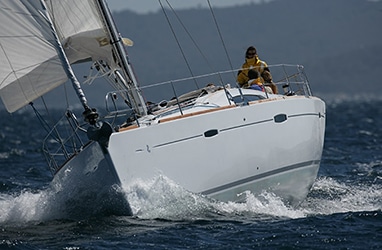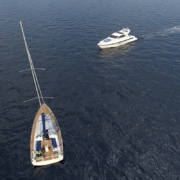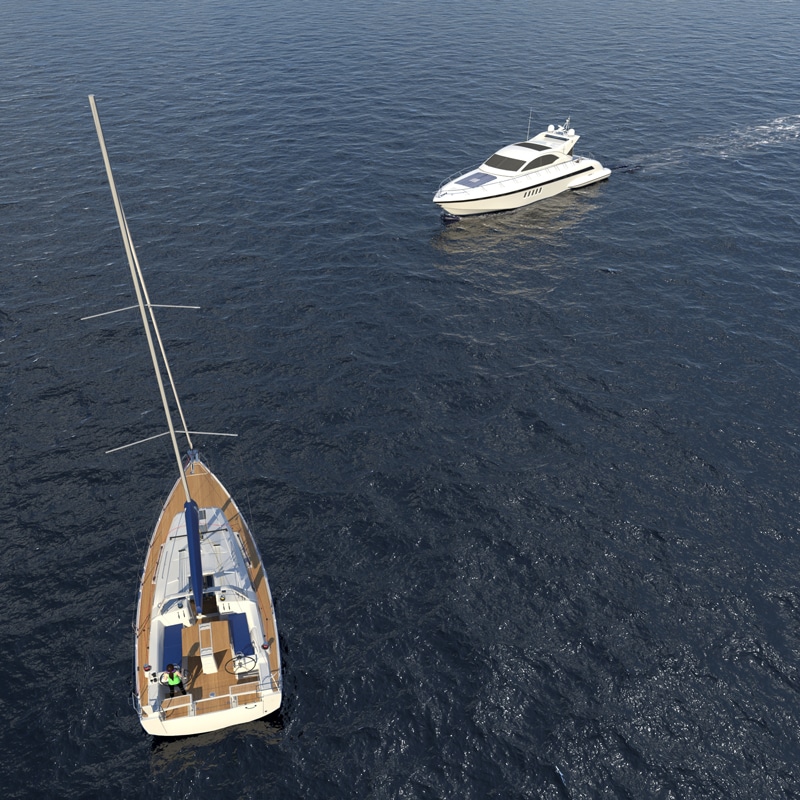Crossing Situations Nav Rules
The Rule
15 (a) When two power-driven vessels are crossing so as to involve risk of collision, the vessel which has the other on her own starboard side shall keep out of the way and shall, if the circumstances of the case admit, avoid crossing ahead of the other vessel.
Discussion
There is an easy way to remember this.
First, repeat this mantra to yourself which for most of us is easy to remember referring to red port wine.
“Is there any RED PORT LEFT?”
It means that the left side of your boat is the port side and the light color on it is red.
Knowing that red lights on boats are positioned on the port side of the vessel and green lights are positioned on the starboard side of the vessel, an easy way to remember this crossing rule is that the vessel is required per this rule to stay clear of the other will see the red light side of the other vessel. In our normal everyday driving situations, a red light means stop and a green light means go. Thus, the vessel seeing the green light side of the other vessel is the Stand-On vessel. The vessel seeing the red light is the Give-Way vessel.
Note this says power-driven vessels so it does not apply to sailboats under sail with engines off. Also, note – you can’t try to be tricky and turn your engines off. The rule says “… as to involve the risk of collision”. You entered the involving situation under power so the power-driven rule applies to you at the onset.
In this case, the sailboat is a power-driven vessel. It is in a crossing situation with another power-driven vessel. The sailboat will see the red light side of the powerboat and so here the sailboat must keep clear of the powerboat and it should avoid crossing in front of the powerboat. Discretion is left to the giveway skipper as to which way to turn to best avoid a close-quarters situation.







